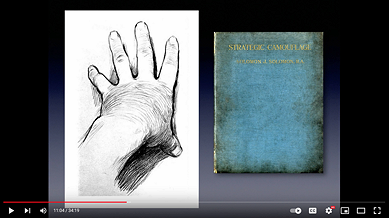 |
| Solomon J. Solomon, Self-Portrait |
The first, named Simeon Solomon (1840-1905) was associated with the Pre-Raphaelites. He was from a prominent family, and was an undoubtedly capable artist. But his life was ruined by a series of highly public scandals having to do with sexual licentiousness and alcoholism.
The second was Solomon J. Solomon (1860-1927), who was also an excellent painter, and one of the few Jewish artists to be elected to the Royal Academy. His personal reputation was beyond reproach, and indeed he became a hero of sorts during World War I when he was the first person to be placed in charge of British army camouflage. He was also the author of what may have been the first book on military camouflage, titled Strategic Camouflage.
Unfortunately, it was not uncommon for the public to confuse the two Solomons, so that “the good Solomon” was besmirched by being mistaken for “the bad Solomon.” There is a brief turnabout reference to this on page 103 of the autobiography of the Irish poet William Butler Yeats (The Autobiography of William Butler Yeats: Consisting of reveries over childhood and youth, the trembling of the veil, and dramatic personae. New York: Macmillan, 1953), in the following passage—
All [a certain group of artists] were pre-Raphaelite, and sometimes one might meet in the rooms of one or other a ragged figure, as of some fallen dynasty, Simeon Solomon the pre-Raphaelite painter, once the friend of [Dante Gabriel] Rossetti and of [Algernon Charles] Swinburne, but fresh now from some low public house. Condemned to a long term of imprisonment for a criminal offense, he had sunk into drunkenness and misery. Introduced one night, however, to some man who mistook him, in the dim candle light, for another Solomon, a successful academic painter and RA [Royal Academician], he started to his feet in a rage with, “Sir, do you dare to mistake me for that mountebank?”
Certain contributions made by Solomon J. Solomon in the development of military camouflage are explained in a new short video titled Nature, Art and Camouflage, free and accessible online here (see frame below).
 |
| Nature, Art and Camouflage (video) |



